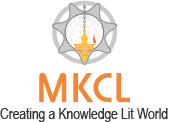INTRODUCTION AND SCHEME OF EXAMINATION
Admission criteria to Undergraduate Engineering Programs at NITs, IIITs, Other centrally funded Technical Institutions, Institutions funded by several participating State Governments, and several other Institutions shall include the performance in the class 12/other Qualifying Examination and in the Joint Entrance Examination, JEE (Main). The Paper-1 of JEE (Main) will also be an eligibility test for the JEE (Advanced), which the candidate has to take if he/she is aspiring for admission to the undergraduate programs offered by the IITs.
ABOUT JEE (Main)
Mode of Examination:
The Paper-1 (described below) of JEE (Main) will be conducted in two separate modes i.e. Offline (Pen and Paper Based Examination) mode and Online (Computer Based Examination) mode. The Paper-2 of JEE (Main) will be conducted only in Pen and Paper based examination mode. A candidate will opt for either Pen or Paper Based or Computer Based examination modes for Paper-1 only.
Type of Examination:
JEE (Main) shall have two papers, Paper-1 and Paper-2. Candidates may take Paper-1, or Paper-2, or both as per the course(s) they are seeking admission to.
Subject combination for each paper, type of questions in each paper and mode of examination available is given in the table below.
SUBJECTS TYPE OF QUESTIONS MODE OF EXAM:
| Subjects | Type of Questions | Mode of Exam | |
|---|---|---|---|
| Paper 1 | Physics, Chemistry and Mathematics | Objective type with equal weightage to Physics, Chemistry and Mathematics | Pen and paper based OR Computer based |
| Paper 2 |
Mathematics Part I Aptitude Test Part II & Drawing Test Part III |
Objective type Objective type Questions to test drawing aptitude |
Only pen and paper based |
Course Papers:
B.ARCH/B. PLANNING (At Institutions other than IITs) Paper –2 All other undergraduate courses Paper –1
Choice of Language of Question Papers:
A candidate can opt for question papers either in English or in Hindi. Those candidates who have opted for centers in the state of Gujarat can also opt For question paper in Gujarati medium. The option of question paper language should be exercised while filling up the Application Form and it cannot be changed at a later stage.
Eligibility for Admission to NITs, IIITs and Other Institutions participating through Central Counseling Board:
Admission to NITs, IIITs and other institutions participating though Central Counseling Board will be based on All India Rank as explained
Subject combinations required in the qualifying examination for admission to B.E./B.Tech. and B. Arch./B. Planning Courses in NITs, IIITs, and other CFTIs shall be as under.
| Course | Required criteria based on class 12th / Other qualifying examination |
| B.E./B.Tech | Subjects in qualifying examination: Physics, Mathematics and one of the subject from (Chemistry, Bio-technology, Computer Science, Biology) along with 50% marks in total including all subjects |
| B.Arch/B.Planning | Mathematics subject along with 50% marks in total including all subjects |
Ranking Methodology for JEE:
The admissions to NITs and other centrally funded technical institutions bases on scores of BOTH the Entrance examination and the Board marks. As per the notification of the JEE Main, there is a 40% weightage to overall Board marks (5 subjects). In view of large scale variations in the examination system in country, the JEE Interface Group (JIG) decided on a special procedure to normalize Class XII Board Marks. The highlights of the same are:
- For the first time in 2013, the admissions to NITs and other centrally funded technical institutions bases on scores of BOTH the Entrance examination and the Board marks. As per the notification of the JEE Main, there is a 40% weightage to overall Board marks (5 subjects). In view of large scale variations in the examination system in country, the JEE Interface Group (JIG) decided on a special procedure to normalize Class XII Board Marks. The highlights of the same are:
- Percentile scores amongst different boards/ examining bodies are correlated to a common All India JEE- Main percentile score. 50% of Board marks are normalized using this correlation.
- Again percentile scores among each of the board/ examining body is correlated to a JEE Main percentile mark for that respective board/ examining body. 50% of the board marks are be normalized in this manner.
Thus the JIG has detailed a procedure for normalization of Board marks as given below:
- Note the aggregate marks (A0) obtained by each student in JEE Main.
- On the basis of aggregate marks scored by each aspirant in his/her own board (B0), the percentile (P) is calculated. P is computed from the list of five subjects specified (each marked out of 100) and among all students of the board whose subject combinations meet the eligibility criteria of JEE-Main. Five subjects to be used for normalization:-
- Physics
- Mathematics
- Any one of the subjects Chemistry, Biology, Biotechnology and Computer Science
- One language
- Any subject other than the above four subjects.
- Determine the JEE Main aggregate marks corresponding to percentile (P) at the All- India level. We call this B1.
- Also, determine the JEE Main aggregate marks corresponding to percentile (P) among the set of aggregate scores obtained in the JEE- Main by the students of that board. We call this B2.
- The normalized board score of the candidate will be computed as: B = 0.5 X (B1 + B2)
- a.For the purpose of admission to NITs and other Centrally Funded Technical Institutions where Main Score and Board score are taken in the 60:40 ratio, the composite score for drawing the merit list will be computed as: C=0.6 X A0+0.4 X B


